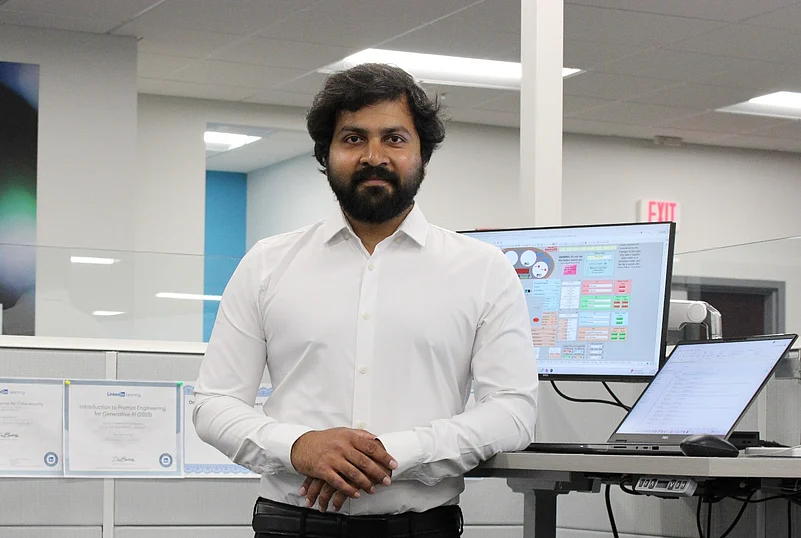There is a major and rapid transformation occurring within the automotive industry — a sector initially driven by mechanical engineering but gradually being transitioned into a software-centric domain. Today, a vehicle is not just an isolated machine — they constitute what is called an intelligent and connected system that requires updates ranging from security patches to a broad set of new functionalities. The more these vehicles rely on software, the greater the importance of implementing secure and efficient OTA (over-the-air) update mechanisms. The traditional method of installing updates is declining as remote update systems capable of delivering improvements seamlessly and securely from users’ residences become more prevalent. Yet, with such advancements come the challenges of end-to-end cybersecurity and system reliability across millions of connected vehicles worldwide.
Addressing these challenges is Veera Venkata Krishnarjun Rao Adabala, a technologist in the field of automotive software and embedded security systems. Veera has contributed to the development and implementation of OTA security mechanisms for ECUs, in systems ranging from embedded vehicle platforms to cloud-based software distribution infrastructure. His experience includes securing system architectures and applying them to production environments that demonstrate operational performance and cybersecurity considerations on global vehicle platforms.
One of Veera’s notable contributions has been designing end-to-end encryption and authentication protocols that have improved the security of OTA pipelines. Working closely with cybersecurity and embedded engineering teams, he supported integrations that increased the reliability of remote updates and reduced downtime across vehicle fleets. His efforts have been recognized internally for supporting strategic business goals and for enhancing the security posture of connected vehicles.
Veera’s impact within his organization has been operational and financial. By enabling remote OTA updates, he contributed to reducing the dependency on physical service center visits, leading to a reduction in warranty-related interventions and contributing to cost savings. His work in implementing secure boot processes and signature verification protocols helped prevent unauthorized firmware execution, supporting vehicle security at scale. Additionally, his efforts assisted the company in meeting international cybersecurity compliance requirements, including ISO 21434 and UNECE WP.29, thereby facilitating global product approvals and reducing the risk of recall scenarios.
Among his notable projects, Veera contributed to the development of OTA systems for programs at General Motors. These projects required the design of secure, fault-tolerant, and scalable OTA frameworks embedded into production vehicle architectures. He also participated in a collaborative cross-OEM initiative that aimed to create standardized OTA frameworks to support interoperability across automotive suppliers. These initiatives tested his technical expertise and established him as a contributor in the automotive development ecosystem.
The results of Veera’s work are measurable. Under his oversight, OTA updates have reached over 98% of targeted vehicle fleets without the need for manual intervention, a level of reliability that reduced the workload on customer support teams and improved user experience. Remote patching capabilities contributed to a 30–40% reduction in service center visits for software-related issues. Furthermore, through his optimization of update payloads and transmission efficiency, data transfer costs per vehicle were reduced by approximately 25%, demonstrating both technical effectiveness and business impact.
One of the more complex challenges Veera faced was ensuring the security and reliability of OTA systems in real-world automotive environments characterized by inconsistent connectivity and diverse hardware constraints. To mitigate these risks, he designed a multi-layered signature verification protocol to guard against firmware tampering, and developed a resumable update mechanism equipped with fail-safe checkpoints and adaptive retry logic. These innovations proved essential in maintaining ECU integrity during network interruptions, enhancing the dependability of OTA as a maintenance strategy.
Veera observes that as OTA technology has developed, secure updates have transformed the way cars are maintained and enhanced over time. What used to require a visit to the service center can now be done securely, remotely, and in real time. He stresses that although encryption is essential, it needs to be backed by fail-safe designs, transparent user interfaces, and robust engineering rollback features. In the future, he anticipates a closer connection between OTA systems and vehicle telemetry, opening the door to data-driven update prioritization and predictive maintenance. Additionally, he thinks that as vehicle-to-cloud communications grow, zero-trust architecture will become a fundamental component of automotive cybersecurity.
Besides engineering, he also participated in technical discussions and internal knowledge sharing, ultimately refining ideas that continue to influence best practices in secure OTA development. His contribution serves as an example of practical engineering combined with a focus on security and scalability that supports new possibilities for the automotive industry.
About- Veera Venkata krishnarjun Rao Adabla
Veera Venkata Krishnarjun Rao Adabla is an Electronics Software Engineer in the automotive industry. He specializes in embedded software for intelligent door systems, with experience in cybersecurity, CAN configuration, and sensor integration. He has worked on features like voice-activated doors and Haptronics-based systems for OEMs including GM, Subaru, and Great Wall Motors. His focus is on integrating real-time physics with automotive software, optimizing battery use in EVs, and implementing OTA updates and secure key provisioning, contributing to developments in smart mobility solutions.














